There can be your advertisement
300x150
15 Architectural Wonders of the World to Visit
Architecture is where art and innovation meet. For centuries, across the globe, humanity has created remarkable structures that go beyond design and engineering capabilities. These wonders are not just buildings but symbols of history, culture, and human aspirations. From ancient cities carved into cliffs to futuristic skyscrapers piercing the sky, these architectural masterpieces are places that must be seen with your own eyes. Here is a journey through 15 architectural wonders that will inspire your imagination and curiosity.
1. Great Pyramid of Giza, Egypt
The Great Pyramid of Giza, built for Pharaoh Khufu around 2570 BC, is one of the Seven Wonders of the Ancient World. Originally reaching a height of 481 feet (147 meters), it was the tallest artificial structure for nearly 4,000 years. The base of the pyramid measures 755.75 feet (230 meters) on each side and was constructed from approximately 2.3 million limestone blocks, each weighing an average of 2.5 tons. The Great Pyramid is oriented with incredible precision; its sides almost perfectly align with the main compass directions. Inside the pyramid are the King's Chamber, the Great Gallery, and numerous shafts and corridors that add to its complex and mysterious structure.
The Most Interesting Fact About the Great Pyramid of Giza: One of the most fascinating aspects of the Great Pyramid is its mysterious construction process. Although modern theories suggest using ramps and levers to move massive stone blocks, there remain unresolved questions about the exact methods. Additionally, it is believed that the original smooth limestone casing made the pyramid shine in sunlight, creating a near-mirror effect. Although most of this casing has worn away, remnants are still visible at the top of the pyramid of Khafre.

2. Machu Picchu, Peru
Machu Picchu, located high in the Andes Mountains of Peru, is a breathtaking example of Inca architecture, engineering artistry, and astronomical knowledge. The city was built in the mid-15th century, likely during the reign of Pachacuti Inca Yupanqui, and is considered a royal estate and sacred site. The precision of the stonework is remarkable, using ashlar masonry techniques that allow stones to fit together so tightly that no mortar was needed. Despite frequent earthquakes in the region, the structures remained largely intact, demonstrating exceptional Inca engineering skills.
An interesting fact about Machu Picchu is that the Spanish conquistadors never found it. Although hidden from the outside world, it was discovered in 1911 by explorer Hiram Bingham. The location and design of the city correspond to the movements of the sun during key astronomical events, emphasizing a well-thought-out understanding of astronomy by the Incas. Its remote location on a steep ridge with views over the Urubamba River provided both strategic and spiritual significance.
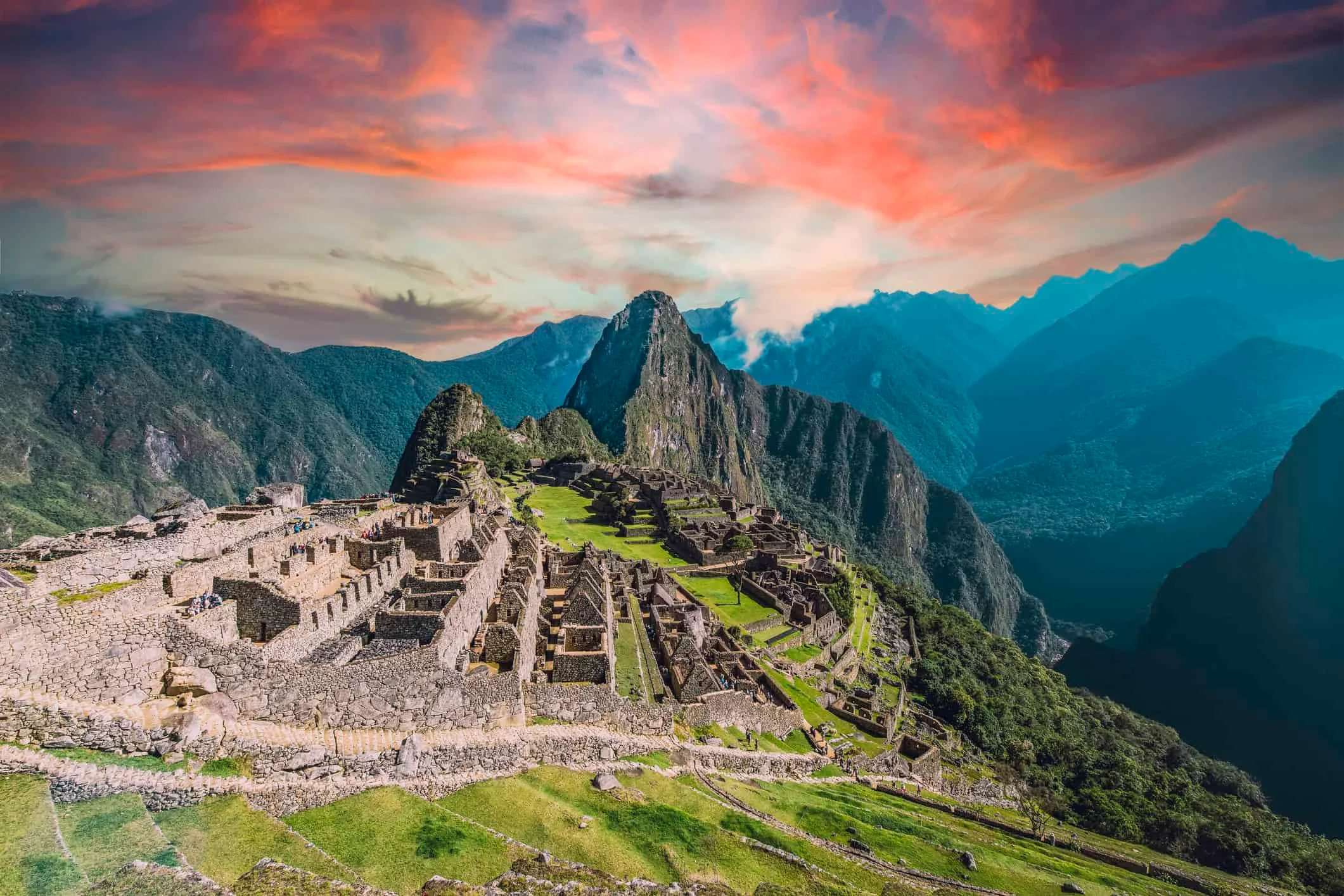
3. Parthenon, Athens, Greece
The Parthenon, located on the Acropolis in Athens, is one of the most famous examples of ancient Greek architecture. Built between 447 and 432 BC, it was originally constructed as a temple dedicated to Athena, the patron goddess of the city. The Parthenon is an ideal example of Doric style, known for its grand proportions and complex design. The building features 46 external and 23 internal Doric columns, with the outer columns being larger than the inner ones. A notable feature of the Parthenon is its slight curvature, specifically designed to compensate for optical illusions and create a sense of elegance and harmony.
The most interesting thing about the Parthenon is its historical transformation. Originally built as a temple, it served various purposes over centuries: it was converted into a Christian church, a mosque, and even a gunpowder storage during the Ottoman period. In the 17th century, Venetians accidentally caused serious damage by bombarding it while using it as a gunpowder depot. Despite its history of damage and reuse, the Parthenon remains a symbol of ancient Greece's power and creativity, attracting millions of visitors each year.

4. Taj Mahal, Agra, India
The Taj Mahal in Agra, India, is a symbol of eternal love and one of the world's most famous architectural masterpieces. Completed in 1653, it was commissioned by Emperor Shah Jahan in memory of his beloved wife Mumtaz Mahal. The Taj Mahal is known for its perfect symmetry and grandeur, combining elements of Persian, Islamic, Ottoman Turkish, and Indian architecture.
The architectural details of the Taj Mahal are mesmerizing. The main mausoleum is adorned with a large marble dome that rises to about 35 meters, topped with a lotus shape that enhances its height. The building stands on an elevated platform surrounded by four minarets, each 40 meters high and designed to fall away from the mausoleum if it collapses. The interior of the mausoleum is decorated with exquisite marble inlays, including precious and semi-precious stones, while the garden around the mausoleum represents a Mughal-style park with a central pool.
One of the most interesting facts about the Taj Mahal is the legend that Shah Jahan planned to build a 'Black Taj' opposite the monument, intending it as his own mausoleum, but this was never realized due to his son's imprisonment. This unrealized dream adds a layer of mystery to the already captivating story of the Taj Mahal.

5. Angkor Wat, Cambodia
Angkor Wat, one of the most famous temple complexes in the world, is an ideal example of Khmer architecture. The design follows the principles of a 'temple mountain,' symbolizing the sacred Mount Meru, central in Hinduism and Buddhism. The central tower, majestically rising above the entire complex, is surrounded by four smaller towers imitating mountain peaks. The entire complex was built from sandstone, demonstrating intricate bas-reliefs and carvings depicting scenes of Hindu mythology, historical events, and daily life during the Khmer Empire.
The temple is an architectural masterpiece due to its grand scale and precise design. Its galleries and courtyards are connected by walkways, creating an impressive sense of order and space. The inner sanctum and galleries are adorned with detailed sculptures, while the extensive bas-reliefs along the temple walls demonstrate a high level of craftsmanship by Khmer builders. The location of Angkor Wat also includes orientation to celestial phenomena, with the central axis of the temple aligned toward the sunrise on the spring equinox, underlining its connection to astronomy and divinity.
The Most Interesting Fact: The most captivating aspect of Angkor Wat is that it served as a temple for Vishnu and later became a Buddhist complex, reflecting the religious evolution of Cambodia. Despite destruction over time and political instability, the temple remains a spiritual center with its towering spires and detailed sculptures that continue to awe visitors. Its symbolic significance also extends to its role as a national symbol—during the Khmer Rouge period, it was abandoned but later restored as a symbol of resilience and identity in Cambodia.

6. Colosseum, Rome, Italy
The Colosseum, a symbol of Ancient Rome, was built between 70 and 80 AD under Emperor Vespasian and completed by his son Titus. It was the largest amphitheater ever built, capable of holding up to 80,000 spectators at its peak. Constructed from travertine limestone, tuff, and brick-faced cladding, the structure is an architectural masterpiece showcasing advanced Roman engineering techniques.
The Colosseum has three main levels, each with its own architectural style. The first level features Doric columns, the second Ionic, and the third Corinthian, symbolizing the hierarchy of Roman society. The upper level was a wooden platform intended for the poorest citizens. One of the most striking elements is the hypogeum—underground tunnels and chambers used for housing gladiators, animals, and decorations, with a complex system of mechanisms allowing dramatic entrances during games.
The Most Interesting Fact About the Colosseum: The most captivating quality of the Colosseum is its role as a symbol of power and propaganda used by Roman emperors. It was not just a place for entertainment but also an instrument employed by emperors to display generosity and political prowess to the masses. Gladiatorial fights, animal hunts, and even simulated naval battles were staged to demonstrate Rome's military might and the emperor’s control over resources throughout the empire.

7. Hagia Sophia, Istanbul, Turkey
Hagia Sophia in Istanbul is renowned for its revolutionary architectural design. Originally built as a church by Emperor Justinian I in 537 AD, it was later converted into a mosque and is now a museum. The building features an enormous central dome, which was an architectural marvel of its time. The dome has a diameter of 31 meters and rises to a height of 55.6 meters above ground, creating the sensation of floating over the central nave. The use of pendentives—triangular sections of a sphere—allowed the placement of a large dome over a square base, which was revolutionary at that time. The interior space is also breathtaking, with mosaics, marble columns, and exquisite details combining Byzantine Christian and Islamic cultures, reflecting its multifaceted history. Four minarets added after the conversion into a mosque give the building an iconic silhouette.
The Most Interesting Detail: One of the most astonishing facts about Hagia Sophia is its incredible resilience to natural disasters. Despite numerous earthquakes over centuries, the building has survived thanks to innovative design and constant restoration work. The massive dome, initially at risk of collapse, received supports and reinforcements throughout different periods to ensure its longevity. Moreover, it was the world's largest church for nearly 1000 years and contained one of the most magnificent Islamic calligraphy in the world during its time as a mosque.

8. Alhambra, Granada, Spain
The Alhambra in Granada, Spain, is an architectural masterpiece known for its refined beauty and the blend of Moorish, Renaissance, and Islamic influences. Built in the 13th–14th centuries, the palace complex served as the residence of the Nasrid dynasty and is famous for its stunning courtyards, fountains, and geometric ceramic finishes. Notable features include the integration of nature and architecture with water channels and gardens symbolizing paradise. The most famous sections include the Court of the Lions, featuring twelve marble lion sculptures, and the stunning Hall of the Abencerrajes, decorated with star-studded ceilings symbolizing the sky.
The most interesting feature of the Alhambra, often mentioned in various discussions, is the optical illusion created by water channels and reflective surfaces. These design elements were not only aesthetically pleasing but also symbolic, reflecting ideals of purity, peace, and paradise in Islamic culture.
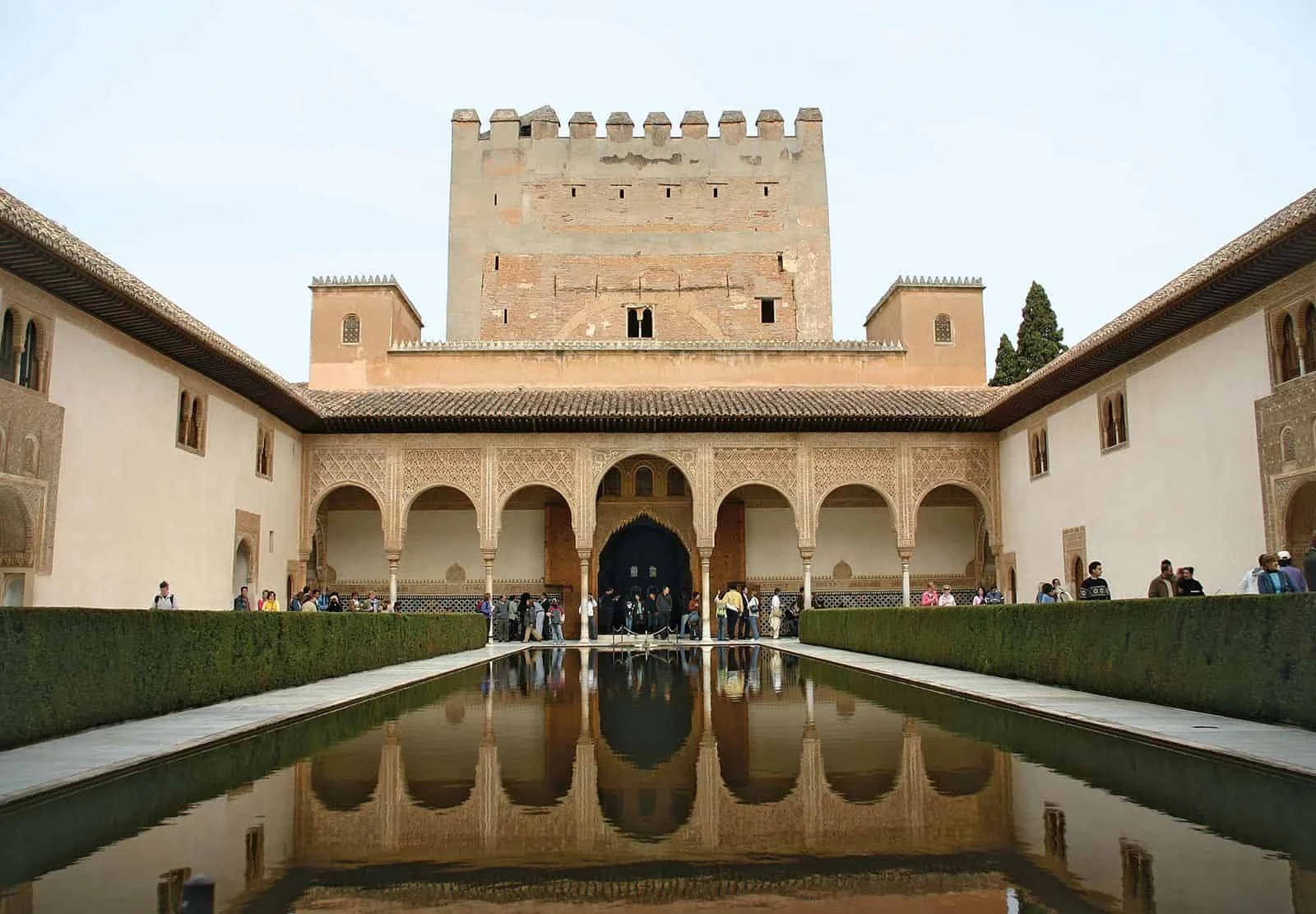
9. Petra, Jordan
Petra is an ancient city carved from the rocks of southern Jordan, known for its unique Nabataean architecture. The main structure of the city—the Treasury (Al-Khazneh)—is a magnificent tomb carved from sandstone with classical Greek columns and elegant facades. The Siq, the narrow canyon leading to Petra, forms an approach to this monument and enhances its dramatic effect.
The location of the city is defined by stone structures, including tombs, temples, and a Roman theater. The Royal Tombs, located on the face of the rock, consist of monumental facades with elegant carvings, while the Monastery (Ad-Deir), situated high above the city, presents a similarly impressive structure. The innovative water supply systems of Petra—including channels, reservoirs, and aqueducts—demonstrate the Nabataeans' engineering skills, enabling them to thrive in a desert environment. The city also shows influences of Greek, Roman, and Egyptian architecture, reflecting the cultural crossroads it once represented.
The Most Interesting Thing About Petra, Jordan: One of the most captivating aspects of Petra is its advanced water management system developed by the Nabataeans. The city's infrastructure included sophisticated channels, dams, and reservoirs that allowed residents to collect and store rainwater—a vital resource in the desert. This system, believed to have supported up to 20,000 people at peak times, made Petra one of the most complex cities in the ancient world.

10. Notre-Dame Cathedral, Paris, France
The Notre-Dame Cathedral in Paris is a stunning example of Gothic architecture, known for its impressive scale and intricate design. Notable architectural features include ribbed vaults, flying buttresses, and spectacular stained glass windows such as the famous rose windows. The cathedral's towers were the tallest structures in Paris for over 600 years until the Eiffel Tower was completed in 1889.
One of the most interesting facts about Notre-Dame Cathedral is its role in developing Gothic architecture. Flying buttresses allowed for taller and thinner walls, opening space for large stained glass windows that fill the interior with light and create a celestial atmosphere. Additionally, the cathedral has long been a symbol of Paris and underwent significant changes over the centuries, including devastating fires in 2019 that led to efforts for restoration.
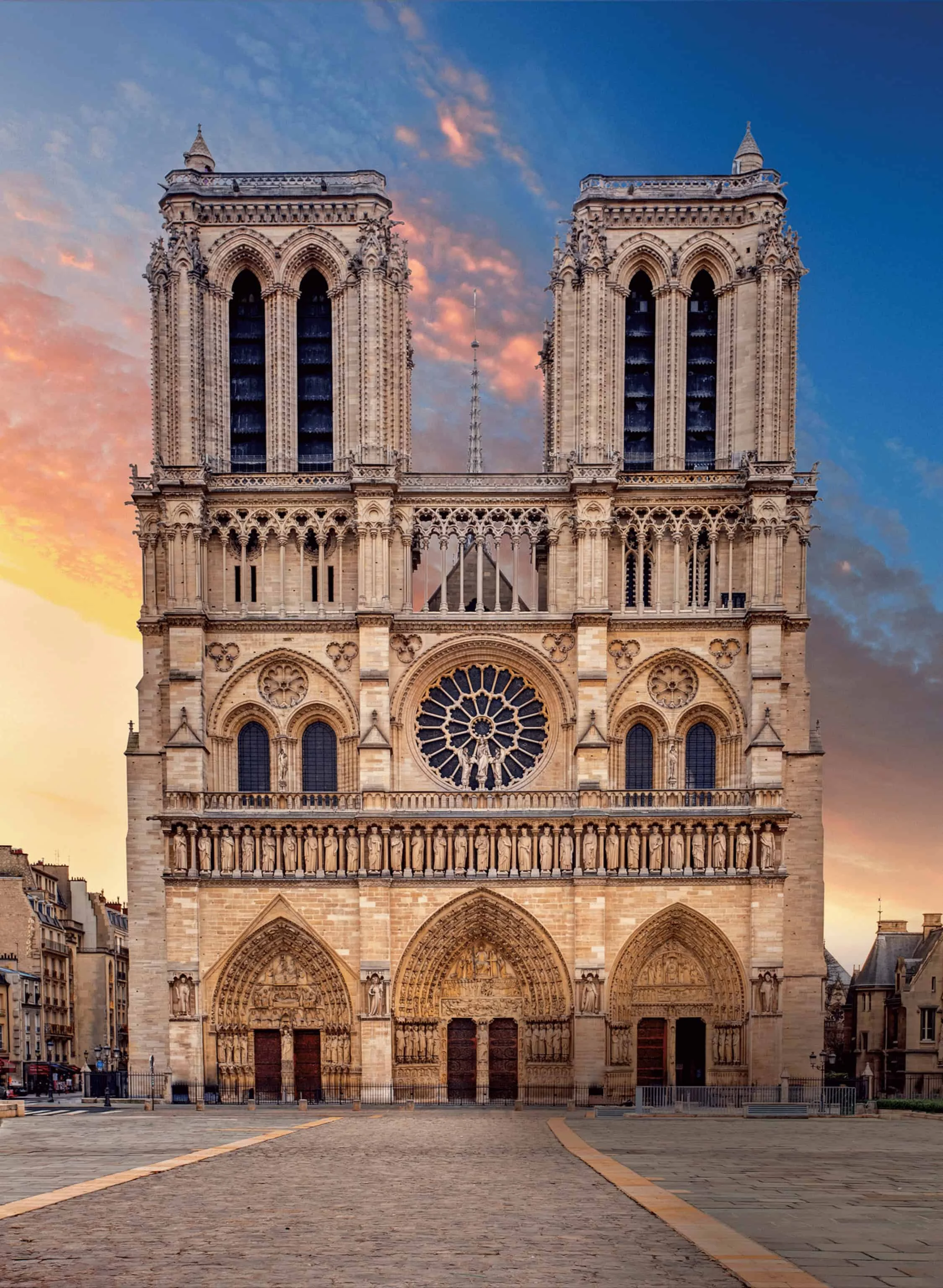
11. St. Basil's Cathedral, Moscow, Russia
St. Basil's Cathedral, built between 1555 and 1561, is known for its unique and colorful architecture. It consists of eight onion domes, each decorated with a distinctive dome. The domes are painted in bright colors such as red, green, blue, and gold, often adorned with complex patterns, giving the cathedral a unique and almost magical appearance. The form of the cathedral is said to resemble flames rising toward heaven, symbolizing divine light in Christianity.
The central structure has a cross-shaped form, with the main central church surrounded by eight smaller towers. The design combines traditional Byzantine and Orthodox styles, with influences from early medieval times, while the exterior decoration reflects a synthesis of Russian, Asian, and Byzantine motifs. Inside the cathedral are beautiful frescoes and paintings depicting scenes from the Bible and Russian church history.
The Most Interesting Fact About St. Basil's Cathedral: One of the most captivating features of St. Basil's Cathedral is that it was nearly destroyed during the Soviet Union era. Ivan Stalin considered demolishing it in the 1930s to free up space for a new grand avenue in Moscow. However, it was preserved, possibly thanks to the intervention of Soviet architect Peter Baranovsky, who reportedly convinced Stalin of the cathedral's historical and cultural importance. Today, it is a UNESCO World Heritage Site and one of the most recognizable symbols of Russian architecture.

12. Chichen Itza, Mexico
Chichen Itza, located on the Yucatan Peninsula in Mexico, is one of the most famous and well-preserved archaeological sites of ancient Maya civilization. The site flourished between the 7th and 10th centuries AD and was an important center for politics, economy, and religious ceremonies.
The most famous structure at Chichen Itza is the Pyramid of Kukulkan, also known as El Castillo, dedicated to the feathered serpent god. This pyramid has an impressive astronomical alignment—during spring and autumn equinoxes, the setting sun creates shadows that form the illusion of a snake slithering down the steps, representing the god's descent to Earth.
Besides its impressive architecture, Chichen Itza is also known for its Great Ball Court, the largest in Mesoamerica, where ceremonial ball games were played with political and ritual significance. The site also includes the Temple of the Sacred Cenote, a large well used for sacrificial offerings.
As a UNESCO World Heritage Site and one of the New Seven Wonders of the World, Chichen Itza continues to attract millions of tourists amazed by the advanced knowledge of astronomy, engineering, and mathematics demonstrated by ancient Maya. The legacy of this site underscores the complexity and cultural richness of Mesoamerican civilization.
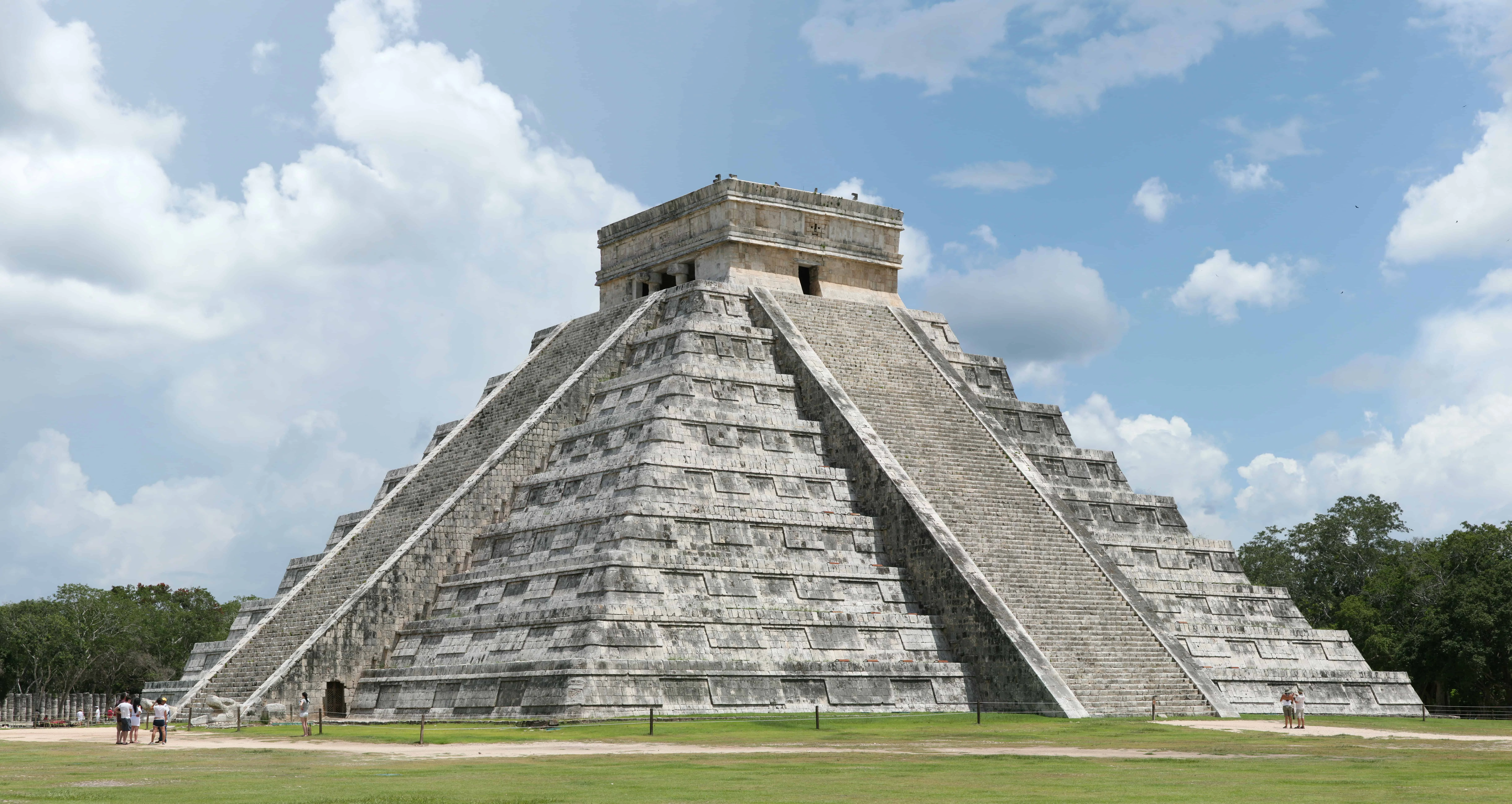
13. Palace of Versailles, France
The Palace of Versailles, located outside Paris, France, is a stunning example of French Baroque architecture. Originally just a hunting lodge for King Louis XIII, it was transformed and expanded by his son Louis XIV, as we see today. The palace is known for its luxurious architecture, especially the Hall of Mirrors, where French kings held official ceremonies and state affairs. It includes exquisite gardens, fountains, and meticulously planned landscapes designed by André Le Nôtre.
Architecturally, Versailles is a masterpiece of symmetry and balance with long classical columns, decorative ceilings, and marble floors. The palace also showcases luxurious interiors, with rooms such as the King's Grand Apartments, decorated with gold leaf and mirrors, and the Versailles Chapel, a magnificent example of Baroque religious architecture.
The Palace of Versailles is not just a royal residence but also a symbol of absolute power under Louis XIV, who famously declared: “L’État, c’est moi” (I am the state). It became the political center of France from 1682 until the French Revolution in 1789. The palace is now a UNESCO World Heritage Site and one of the most visited tourist destinations in the world.
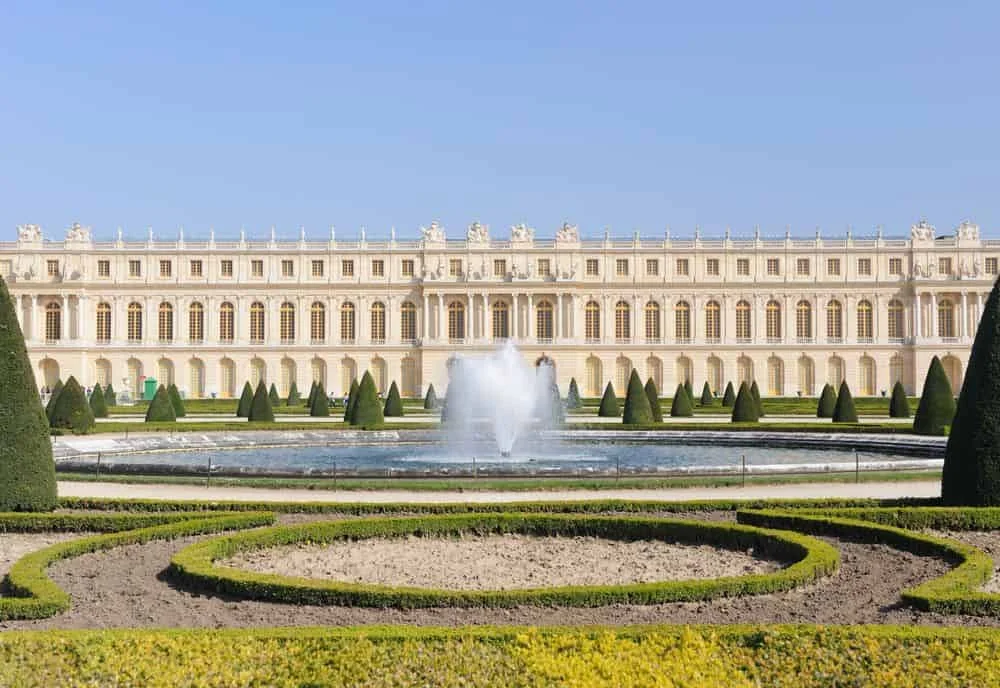
14. Neuschwanstein Castle, Germany
Neuschwanstein Castle, located in Bavaria, Germany, showcases an eclectic blend of architectural styles, primarily inspired by medieval castles and Wagner's operas. Its design combines elements of Romanesque, Gothic, and Renaissance styles with majestic towers, pointed roofs, and intricate stone carvings. The castle's interior reflects the romantic ideals of King Ludwig II with luxurious rooms such as the Throne Room and the Singers' Hall, filled with detailed woodwork, frescoes, and symbolic motifs inspired by Wagner's operas. One of the most remarkable features is its innovative use of technology for its time. It was equipped with central heating, water supply, and even a primitive telephone system—modern conveniences that were rare for a building constructed in the 19th century. The castle's exterior is defined by its dramatic location atop a hill with breathtaking views of the Alps and surrounding forests, making it not just an architectural masterpiece but also a spectacular sight in design and landscape integration.
The most interesting thing about Neuschwanstein Castle is that it became the inspiration for Disney's Sleeping Beauty Castle. King Ludwig II, who commissioned the castle, was a great admirer of composer Richard Wagner, and the castle's design reflects themes from Wagner’s operas. Despite its medieval appearance, it had modern innovations for its time, such as central heating, water supply, and a telephone system.
Another fascinating fact is that King Ludwig spent only 11 nights in the castle before his mysterious death, leaving most of it unfinished. Of the planned 200 rooms, only 14 were completed.

15. Burj Khalifa, Dubai, UAE
Burj Khalifa is the world's tallest building at 828 meters (2,717 feet) with 163 floors. Its design is inspired by the flower Hymenocallis, featuring a smooth, spire-like form that becomes thinner as it rises. The building's exterior cladding consists of 26,000 glass panels carefully handcrafted for resilience against Dubai's heat. Inside are luxurious apartments, corporate offices, and the magnificent restaurant At.mosphere on the 122nd floor. Advanced engineering allows the structure to withstand strong winds, and the foundation is built on 192 reinforced concrete piles, some reaching over 50 meters in depth.
The Most Interesting: An engaging aspect of Burj Khalifa is its temperature difference—temperatures at the top are typically 15°C (59°F) cooler than ground level, but it also houses the world's highest observation deck on the 148th floor. Additionally, it holds several records including the tallest freestanding structure, most floors, and highest elevator. Burj Khalifa has become a global symbol of Dubai's rapid development and even appeared in films such as Mission: Impossible.
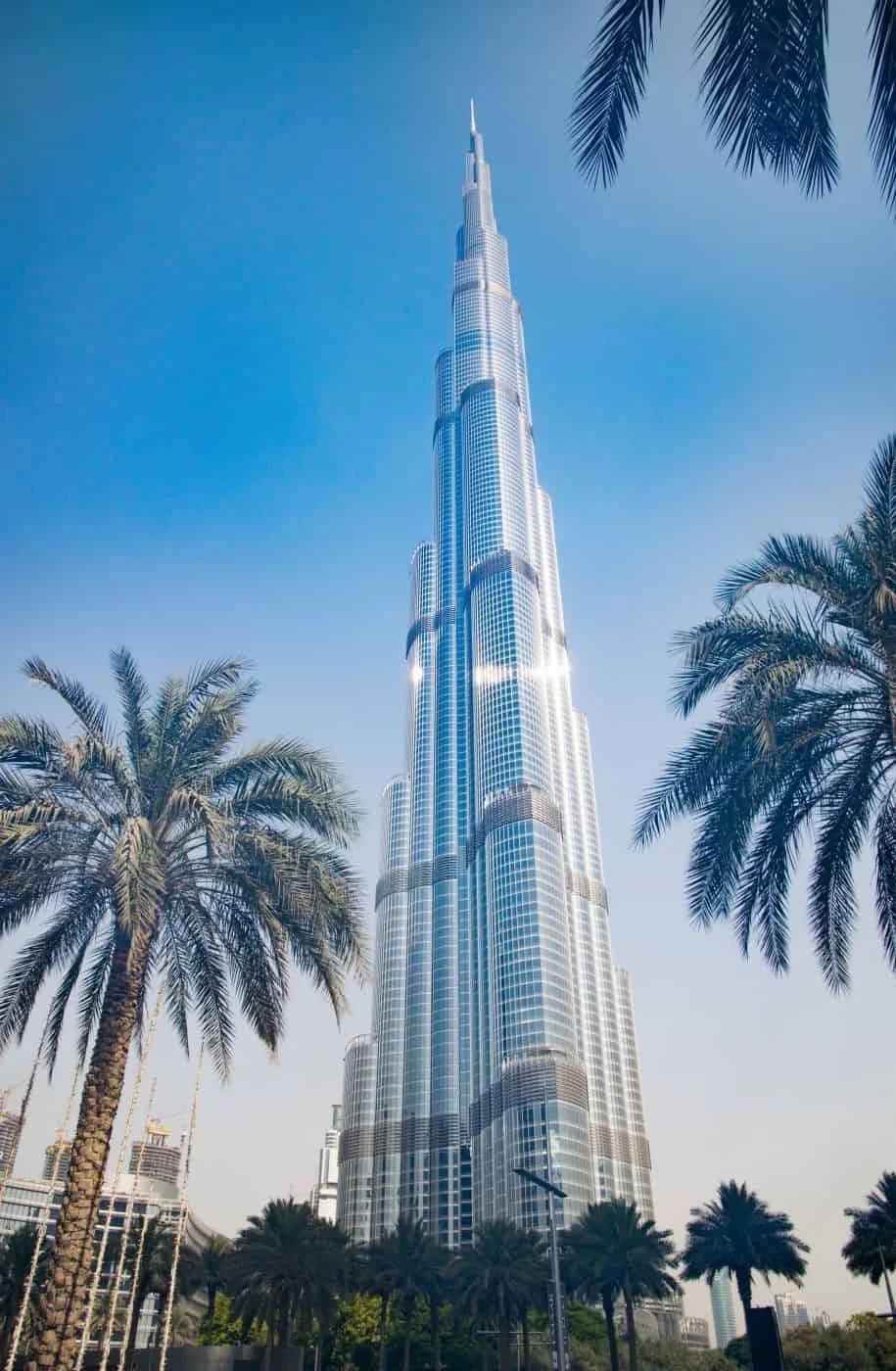
Conclusion
These architectural wonders are more than just tourist attractions; they are legacies of human creativity and innovation. Each place tells a story of its time, culture, and the people who built it. Visiting these places is a journey through history, art, and genius—a chance to stand in awe of humanity's greatest achievements. Which one will you visit first?
More articles:
 Interior Design Trends That Will Dominate in 2023 According to Interior Designers (Part II)
Interior Design Trends That Will Dominate in 2023 According to Interior Designers (Part II) 12 Fantastic DIY Halloween Window Decoration Ideas
12 Fantastic DIY Halloween Window Decoration Ideas 12 Fantastic Ideas for Beverage Coolers for Your Patio
12 Fantastic Ideas for Beverage Coolers for Your Patio 12 Iconic Christmas Movie Houses That Inspire the Holidays
12 Iconic Christmas Movie Houses That Inspire the Holidays 12 Perfect Summer Garden Ideas To Spruce Up Your Space
12 Perfect Summer Garden Ideas To Spruce Up Your Space 12 Stylish DIY Bed Headboard Pillow Projects
12 Stylish DIY Bed Headboard Pillow Projects 12 Super Cool DIY Mushroom Decorations for the Garden
12 Super Cool DIY Mushroom Decorations for the Garden 13 budget ways to update your kitchen
13 budget ways to update your kitchen